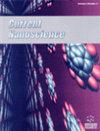Polymersomes as Next Generation Nanocarriers for Drug Delivery: Recent Advances, Patents, Synthesis and Characterization
IF 1.5
4区 材料科学
Q4 BIOTECHNOLOGY & APPLIED MICROBIOLOGY
引用次数: 0
Abstract
Background: Polymersomes (PS), self-assembled nanostructures formed by amphiphilic block copolymers, have garnered significant attention in recent years due to their unique properties and versatile applications in the fields of drug delivery and biomedicine. They are being prepared for a wide range of complex medicinal compounds, including nucleic acids, proteins, and enzymes. Polymersomes have lately been used as vehicles for delivering varied therapeutic substances and regulating ROS (reactive oxygen species). Due to their immunogenic features, polymersomes could play a critical role in enhancing subunit vaccine and drug delivery against COVID-19 infection. Objective: The prime purpose of this manuscript is to furnish an extensive overview of polymersomes, highlighting their recent advances, fabrication methods, characterization techniques, and pharmaceutical applications. Methods: The article has been amassed using several online and offline manuscripts from reputed journals, books, and other resources. Besides this, various user-friendly interfaces, like Pubmed, Google Scholar, etc, have been utilized to gather the latest data about polymersomes. This domain encompasses recent advancements in the realm of innovations about the delivery of drugs through polymeric vesicles. This field involves innovations or developments in nanocarrier systems as they are efficaciously employed to deliver the desired moiety to the targeted site. Results: PS have been discovered to exhibit remarkable promise in addressing various challenges associated with inadequate bioavailability, targeted drug delivery, dosing frequency, and diminished toxic effects. Over the past decade, such nanovesicles have been effectively employed as a complementary approach to address the issues arising from poorly soluble medications. However, this domain still requires further focus on novel breakthroughs. Conclusion: Polymersomes demonstrate unparalleled potential as innovative carriers, exhibiting remarkable versatility and exceptional biocompatibility. This concise review underscores their extraordinary prospects in diverse fields, accentuating their distinctive attributes and opening new avenues for groundbreaking applications.聚合体作为新一代药物递送纳米载体:最新进展、专利、合成和表征
聚合物体是由两亲性嵌段共聚物形成的自组装纳米结构,近年来由于其独特的性质和在药物传递和生物医学领域的广泛应用而引起了人们的广泛关注。它们被广泛用于制备复杂的药用化合物,包括核酸、蛋白质和酶。近年来,聚合体被用作递送各种治疗物质和调节活性氧(ROS)的载体。由于其免疫原性特征,聚合体可能在增强亚单位疫苗和抗COVID-19感染药物递送方面发挥关键作用。目的:这篇手稿的主要目的是提供一个广泛的概述聚合体,突出他们的最新进展,制造方法,表征技术,和制药应用。方法:本文已经收集了来自知名期刊、书籍和其他资源的在线和离线手稿。除此之外,各种用户友好的界面,如Pubmed, Google Scholar等,已经被用来收集关于聚合体的最新数据。这一领域包括通过聚合物囊泡给药的创新领域的最新进展。该领域涉及纳米载体系统的创新或发展,因为它们可以有效地将所需的部分递送到目标部位。结果:PS已被发现在解决与生物利用度不足、靶向给药、给药频率和毒性作用减少相关的各种挑战方面表现出显着的希望。在过去的十年中,这种纳米囊泡已被有效地用作解决难溶性药物引起的问题的补充方法。然而,这一领域仍需要进一步关注新的突破。结论:聚合体作为创新载体具有无可比拟的潜力,具有显著的多功能性和卓越的生物相容性。这篇简明的综述强调了它们在不同领域的非凡前景,强调了它们的独特属性,并为突破性的应用开辟了新的途径。
本文章由计算机程序翻译,如有差异,请以英文原文为准。
求助全文
约1分钟内获得全文
求助全文
来源期刊

Current Nanoscience
工程技术-材料科学:综合
CiteScore
3.50
自引率
6.70%
发文量
83
审稿时长
4.4 months
期刊介绍:
Current Nanoscience publishes (a) Authoritative/Mini Reviews, and (b) Original Research and Highlights written by experts covering the most recent advances in nanoscience and nanotechnology. All aspects of the field are represented including nano-structures, nano-bubbles, nano-droplets and nanofluids. Applications of nanoscience in physics, material science, chemistry, synthesis, environmental science, electronics, biomedical nanotechnology, biomedical engineering, biotechnology, medicine and pharmaceuticals are also covered. The journal is essential to all researches involved in nanoscience and its applied and fundamental areas of science, chemistry, physics, material science, engineering and medicine.
Current Nanoscience also welcomes submissions on the following topics of Nanoscience and Nanotechnology:
Nanoelectronics and photonics
Advanced Nanomaterials
Nanofabrication and measurement
Nanobiotechnology and nanomedicine
Nanotechnology for energy
Sensors and actuator
Computational nanoscience and technology.
 求助内容:
求助内容: 应助结果提醒方式:
应助结果提醒方式:


